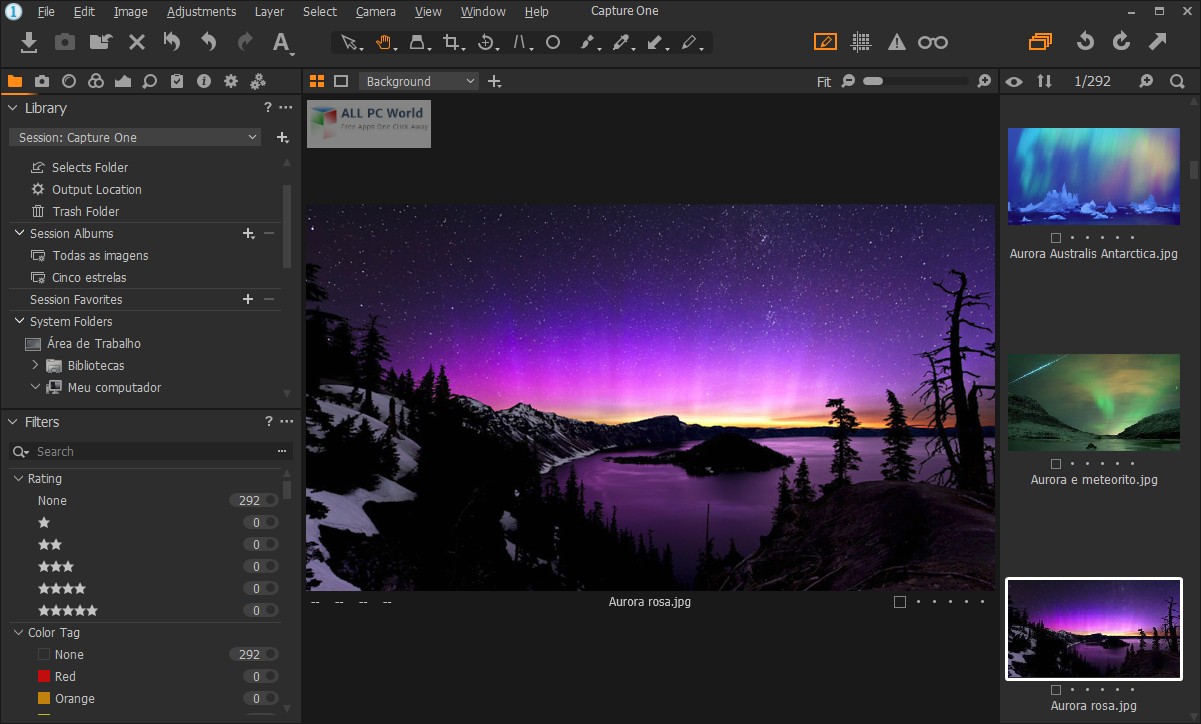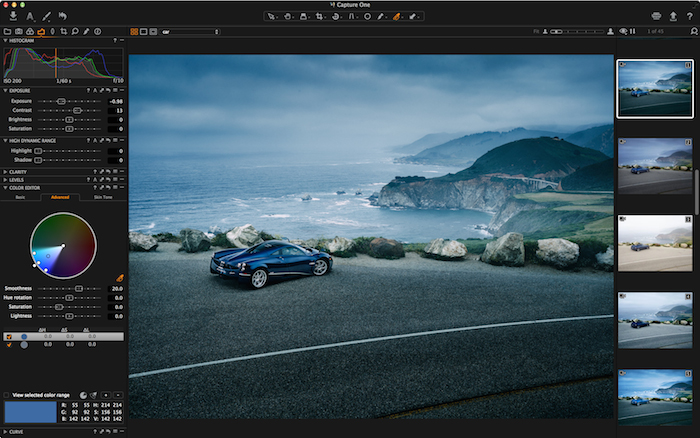
Pixelated clouds in Capture One 22 HDR merge Splotchy water blending in Capture One 22 HDR merge New feature: panoramic image stitchingĪnother long awaited feature in Capture One 22 is panoramic image stitching. Without proper de-ghosting and blending, I wouldn’t trust HDR in Capture One 22. For me and the type of photography I do (landscape), the problems are too severe. Sometimes the blending errors are small, but other times they’re easy to spot and would create a considerable amount of work in Photoshop to fix. Unfortunately, Capture One 22 does not provide de-ghosting, so if a subject isn’t perfectly stationery, HDR DNGs can appear splotchy, pixelated and garbled. For example, water, clouds, trees, cars, people, etc.
#Capture one pro software#
HDR issue #2: no de-ghosting, poor image blendingĭe-ghosting is a common option in HDR software to help smooth and blend areas that shift or move between exposures. But the second HDR issue is unfortunately worse. I also think the resultant DNG should match the exposure levels of the “middle” exposure in a sequence, for that image more accurately represents a photographer’s creative intent - not the over and underexposed images. I don’t know if this is a bug or a feature (Capture One support didn’t respond with an answer in time for this review), but I believe the resultant HDR DNG should be the same regardless of which image a user happened to right-click on. Three HDR files with different exposure values blended using the same three images in Capture One 22 For example, if you select a three-image HDR sequence (one underexposed, one normal, one overexposed), then create three HDR DNGs by right-clicking on each image and selecting Merge to HDR, the resultant HDR files have different exposure and contrast values (see below). How a HDR DNG file “looks” when processed is dependent on which image is “primary” when selecting multiple images. There are however are a couple of notable issues with HDR. Images are correctly aligned, and exposure latitude is greater when adjusting exposure, highlights, shadows, and other brightness/contrast settings. You may then avoid this settings window in the future by assigning a custom keyboard shortcut to the Merge to HDR with default command in Edit > Edit Keyboard Shortcuts.Ĭlick Merge, and Capture One 22 creates a new HDR DNG file with “_DNG” in its filename. When enabling or disabling Auto Adjust and Align, you are assigning defaults for HDR processing.

That said, in my experience, images from a tripod can still be off by a few pixels, so I think it’s better to keep Auto Align checked. For images captured using a tripod, Capture One recommends disabling Auto Align for faster HDR processing. This Auto Adjust checkbox is only for HDR, and there doesn’t appear to be a way to control which settings it modifies.Īuto Align automatically repositions images as needed to ensure they correctly overlap when stacked.

Confusingly, this Auto Adjust checkbox is unrelated to the Auto Adjust options in the toolbar menu (which also controls the Auto Adjust checkbox in the Import window). HDR merge options in Capture One 22Īuto Adjust modifies exposure, contrast, brightness, and HDR panel sliders to create a more finished-looking HDR DNG. Auto Adjust automatically sets exposure and contrast in the resultant HDR DNG, while Auto Align automatically repositions images as needed to ensure proper overlap. Two options are offered when merging images - Auto Adjust and Auto Align. Merging three images to HDR in Capture One 22

This HDR DNG may then be edited using nearly every available tool in Capture One just like a normal, straight-out-of-camera RAW file. Similar to Adobe’s HDR implementation, Capture One 22 merges RAW images into a new, fully editable DNG file. This technique also protects blacks and whites from clipping, reduces noise, and increases detail/sharpness in dark, shadowy areas. HDR is a technique where multiple exposures are blended together to form a single composite image containing a wider dynamic range than what a camera is capable of capturing.
#Capture one pro trial#
Download freel trial of Capture One 22 New feature: HDR (High Dynamic Range)


 0 kommentar(er)
0 kommentar(er)
